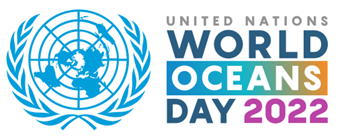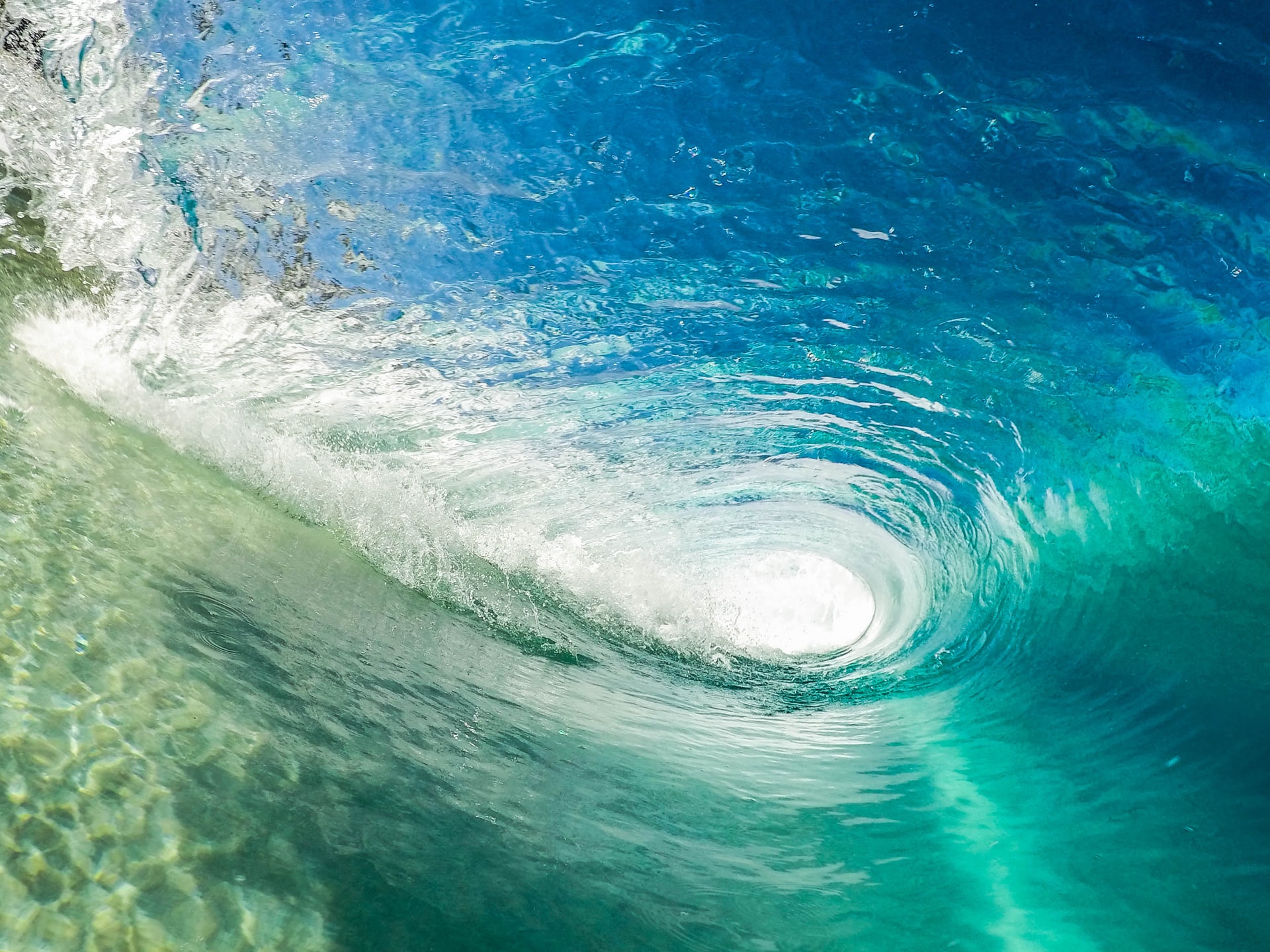 Jeremy Bishop | Unsplash
Jeremy Bishop | Unsplash
Exploring the linkages between the ocean and biodiversity
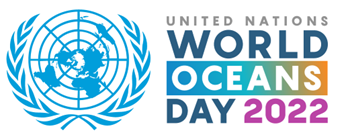
Why is the ocean important?
Across the globe, over 3 billion people rely on the ocean for their livelihoods and more than 350 million jobs are connected to the ocean’s marine and coastal biodiversity [UNCTAD, 2016]. This barely scratches the ocean’s surface regarding the services that marine and oceanic ecosystems provide.
As a driver of global systems that makes life on Earth habitable, the ocean plays a significant role in achieving sustainable development and economic growth as well as providing a broad spectrum of ecosystem services. Some of these services include regulating carbon dioxide emissions and overall temperature, generating and supplying oxygen and clean water, determining weather patterns and precipitation, housing tourism and international trade, preserving underwater cultural heritage and linkages to local communities, providing food and other natural resources and, crucially, serving as a home to an abundance of marine life and biodiversity [FAO, 2020; IPCC, 2019; UNEP, 2021]. It is estimated that the ocean contains between 500,000 and 10 million marine species, many of which have yet to be identified [UN, 2017].
With all of the valuable services and resources that the ocean regulates and provides, which have an estimated annual value of USD 300 billion, it is of the utmost importance that the ocean is carefully and effectively managed in order to achieve the 2050 vision of living in harmony with nature [PDF-674 Kb] and fulfill the Sustainable Development Goals [UNCTAD, 2016].
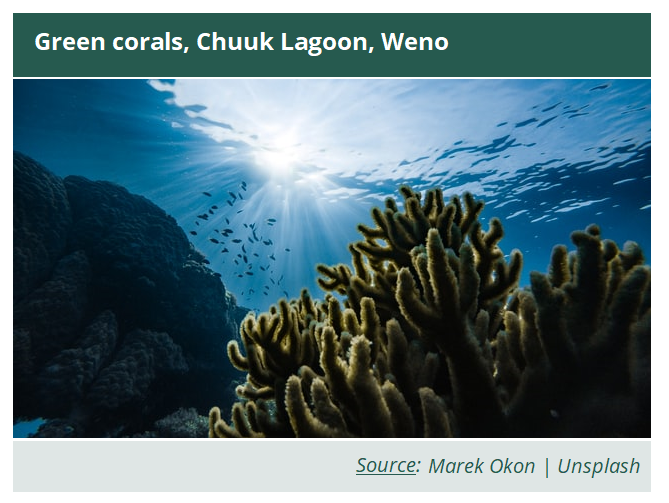
Sustainable Development Goal (SDG) 14: Life Below Water
It is critical for nations around the world to recognize the urgent need for the conservation, protection and sustainable use of marine biodiversity. To accomplish this across United Nations Member States, Sustainable Development Goal 14 aims to “conserve and sustainably use the oceans, seas and marine resources for sustainable development”.
What are the connections between the ocean and biodiversity?
The ocean is intrinsically linked to the biodiversity and enrichment of its marine life and ecosystems. As a result, the ocean and coastal areas are extremely vulnerable to a variety of environmental and anthropogenic phenomena [FAO, 2020; IPCC, 2019; UNEP, 2021]. From the impacts of climate change to plastic pollution and overfishing, there are many unprecedented threats looming over our ocean that are linked to anthropogenic activities.
Climate Change
Climate change has already had a significant impact on ocean and marine ecosystems. In addition to sea levels rising and increases in the frequency and intensity of extreme weather events, ocean warming and ocean acidification have disrupted the chemistry of the ocean’s water and resulted in the destruction of coral reefs as well as the active depletion of the abundance and distribution of marine life in coastal areas, in the open ocean and at the sea floor [IPCC, 2019].
Ocean warming
As of 2019, it was determined that the ocean has absorbed more than 90% of excess heat in the climate system [IPCC, 2019]. This has caused ocean temperatures to rise and is known as ocean warming. The process of ocean warming also results in deoxygenation and sea levels rising [IPCC, 2019]. Combined with the effects of ocean acidification, these events heavily impact the livelihoods of marine ecosystems as well as the species, such as humans, that depend on them [FAO, 2020; IPCC, 2019].
Ocean acidification
Since the 1980s, the ocean has absorbed between 20 to 30% of anthropogenic carbon dioxide emissions [IPCC, 2019]. This has resulted in ocean acidification.
Ocean acidification is a process by which the acidity levels of the ocean’s water increase, primarily resulting from oceanic carbon sequestration, which has adverse effects on marine species distribution and reproductive development [IPCC, 2019]. In addition, coral reefs are extremely vulnerable to changes in the ocean’s chemistry. Known as the rainforests of the sea, it is estimated that over 60% of coral reefs are threatened by ocean acidification, ocean warming, and other anthropogenic events [UN, 2017]. As the ocean has continued to warm and acidify, the frequency of large-scale coral bleaching events has also unfortunately increased [IPCC, 2019]. Together, both ocean warming and ocean acidification have had a direct impact on marine ecosystems and have been amplified by anthropogenic activities.
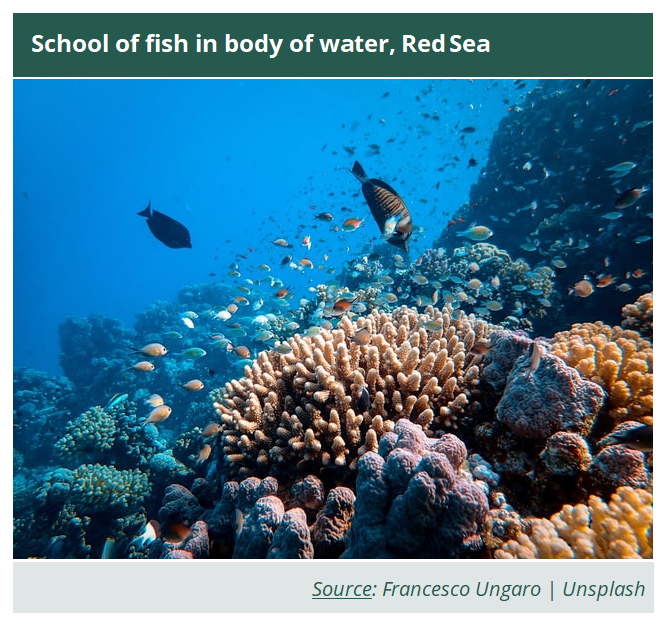
As ocean ecosystems continue to change, altering the distribution of fish populations and ultimately reducing the global catch potential, communities that are highly dependent on seafood and marine resources may face risks to nutritional health and food security [IPCC, 2019]. In 2010, it was estimated that 37% of the world’s population reside in coastal communities [UNSD, 2016].
Plastic Pollution
Plastic pollution is also a dangerous threat to marine and coastal ecosystems, as it can negatively impact global carbon cycling, marine food chains, aquatic species growth and development, human health and more [UNEP, 2021].
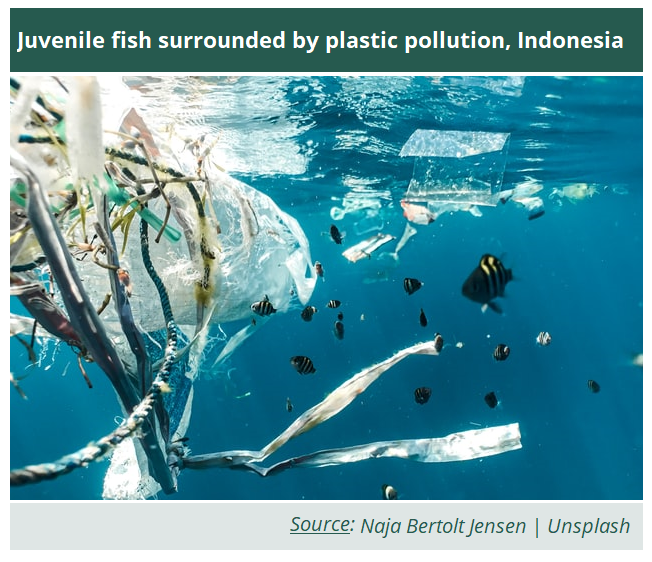
Over 800 marine and coastal species are impacted by plastic pollution through ingestion, entanglement and adsorption of toxic, bio-accumulative substances into plastics and an estimated 75 to 199 million tonnes of plastic are found in the ocean [CBD, 2016; UNEP, 2021]. It is clear that the anthropogenic use, production and disposal of plastics must change. At the fifth session of the United Nations Environment Assembly (UNEA-5) in 2022, 175 nations came together with a historic promise to end plastic pollution and forge an international legally binding agreement by 2024. This resolution is intended to address the full lifecycle of plastic, including its production, design and disposal.
Overfishing
Overfishing is another concern threatening the ocean, marine biodiversity and those who depend on it for nutritional resources and food security. Efforts to increase the percentage of marine protected areas have persevered over the past 20 years. However in 2017, it was determined that 34.2% of fish stocks of global marine fisheries were classified as overfished, a 2.8% increase from 2013 [FAO, 2020; FAO, 2016]
Around the world, fish provide more than 3.3 billion people with 20% of their average per capita intake of animal proteins [FAO, 2020]. It is also estimated that 35% of the global harvest produced by fisheries and aquaculture is either wasted or lost annually [FAO, 2020]. According to the Food and Agriculture Organization of the United Nations, to keep up with the projected increase in demands of world fish trade, production, and consumption, the industry can improve the efficiency and sustainability of this sector through the establishment of policies, regulatory frameworks, capacity building, services and infrastructure, as well as physical access to markets [2020].
How can we help protect ocean biodiversity?
Protecting the ocean must remain a priority for nations around the world. With the plethora of services and resources the ocean provides, it is clear that marine biodiversity is critical to the health of both people and our planet. Through the establishment of policies and regulations, we can reduce the impacts of environmental events such as ocean warming and acidification, marine pollution and overfishing [IPCC, 2019; UNEP, 2021; FAO, 2020].
From preventing land-based marine pollution as well as water and plastic pollution to preserving mangroves and coral reefs, there are many actions we can take and promote to conserve and protect the ocean and its abundance of biodiversity. Learn more about actions we can take to protect ocean biodiversity.
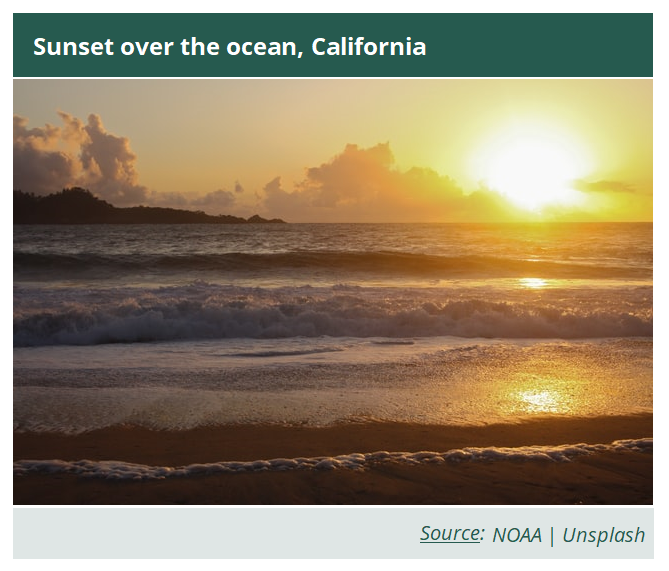
The Post-2020 Global Biodiversity Framework
To be adopted at the second part of COP-15, the post-2020 global biodiversity framework will play an important role in the conservation, sustainable use and equitable benefit-sharing of marine and coastal biodiversity. Currently, preparations for the framework are advancing, with the Open-Ended Working Group on the Post-2020 Global Biodiversity Framework set to have their fourth meeting from 21 to 26 June 2022 in Nairobi, Kenya.
Resources and events
CBD Secretariat publications and notification
Discover various publications published under the Secretariat of the Convention on Biological Diversity and learn more about marine and coastal biodiversity:
- “Revitalization: Collective Action for the Ocean”: Official CBD Statement by Elizabeth Maruma Mrema, Executive Secretary, Convention on Biological Diversity, on the occasion of World Oceans Day 2022, 7 June 2022 [PDF-221 Kb]
- The Sustainable Ocean Initiative: 10 years of building capacity and catalyzing partnerships to achieve global ocean goals, David E. Johnson, Joseph Appiott and Vikki Gunn, Secretariat of the Convention on Biological Diversity, 2022 [PDF-4.95 Mb]
- Special Places in the Ocean: A Decade of Describing Ecologically or Biologically Significant Marine Areas, David E. Johnson, Vikki Gunn, Nicholas Bax, Daniel Dunn and Christopher Barrio Froján (Global Ocean Biodiversity Initiative), Secretariat of the Convention on Biological Diversity, 2021 [PDF-6.49 Mb]
- Global Biodiversity Outlook 5 (CBD flagship publication), Secretariat of the Convention on Biological Diversity, 2020
SCBD Technical Series
- Review of the Impacts of Anthropogenic Underwater Noise on Marine Biodiversity and Approaches to Manage and Mitigate them, Technical Series No. 99, Harding, S. and Cousins N., Secretariat of the Convention on Biological Diversity, 2022 [PDF-4.22 Mb]
- Assessing Progress towards Aichi Biodiversity Target 6 on Sustainable Marine Fisheries, Technical Series No. 87., Garcia, S.M. and Rice, J., Secretariat of the Convention on Biological Diversity, 2020 [PDF-2.14 Mb]
- Marine Debris: Understanding, Preventing and Mitigating the Significant Adverse Impacts on Marine and Coastal Biodiversity, Technical Series No.83, Secretariat of the Convention on Biological Diversity, 2016 [PDF-904 Kb]
- An Updated Synthesis of the Impacts of Ocean Acidification on Marine Biodiversity, Technical Series No. 75, Secretariat of the Convention on Biological Diversity, 2014. [PDF-5Mb]
- Read more SCBD Technical Series...
Upcoming United Nations Observances and Events
Mark your calendars and discover some upcoming and current United Nations observances, initiatives and conferences taking place around the world:
U.N. World Oceans Day, 8 June 2022
U.N. Ocean Conference, Lisbon, 27 June-1 July
U.N. World Maritime Day, 29 September 2022
United Nations Decade of Ocean Science for Sustainable Development (2021-2030)
Citations
- [UNEP, 2021] From Pollution to Solution: A global assessment of marine litter and plastic pollution, Nairobi, 202. UNEP Interactive Story: Our planet is choking on plastic
- [FAO, 2020] The State of World Fisheries and Aquaculture 2020: Sustainability in action, Rome, 2020. FAO Web Interactive Story
- [IPCC, 2019] Special Report on the Ocean and Cryosphere in a Changing Climate, IPCC, In press, 2019
- [UN, 2017] The ocean factsheet, the Ocean Conference, UN, New York, 2017 [PDF-521 Kb]
- [FAO, 2016], The State of World Fisheries and Aquaculture 2016: Contributing to food security and nutrition for all, Rome, 2016
- [SCBD, 2016] Marine Debris: Understanding, Preventing and Mitigating the Significant Adverse Impacts on Marine and Coastal Biodiversity, Technical Series No.83, Secretariat of the Convention on Biological Diversity, 2016 [PDF-904 Kb]
- [UNCTAD, 2016] Oceans Economy and Ecosystem services: sustainable fisheries and coastal tourism (Side event to the CBD COP 13), UNCTAD, Cancun, 2016
- [UNSD, 2016] The Sustainable Development Goals Report 2016, UNSD, New York, 2016 [Web version]

